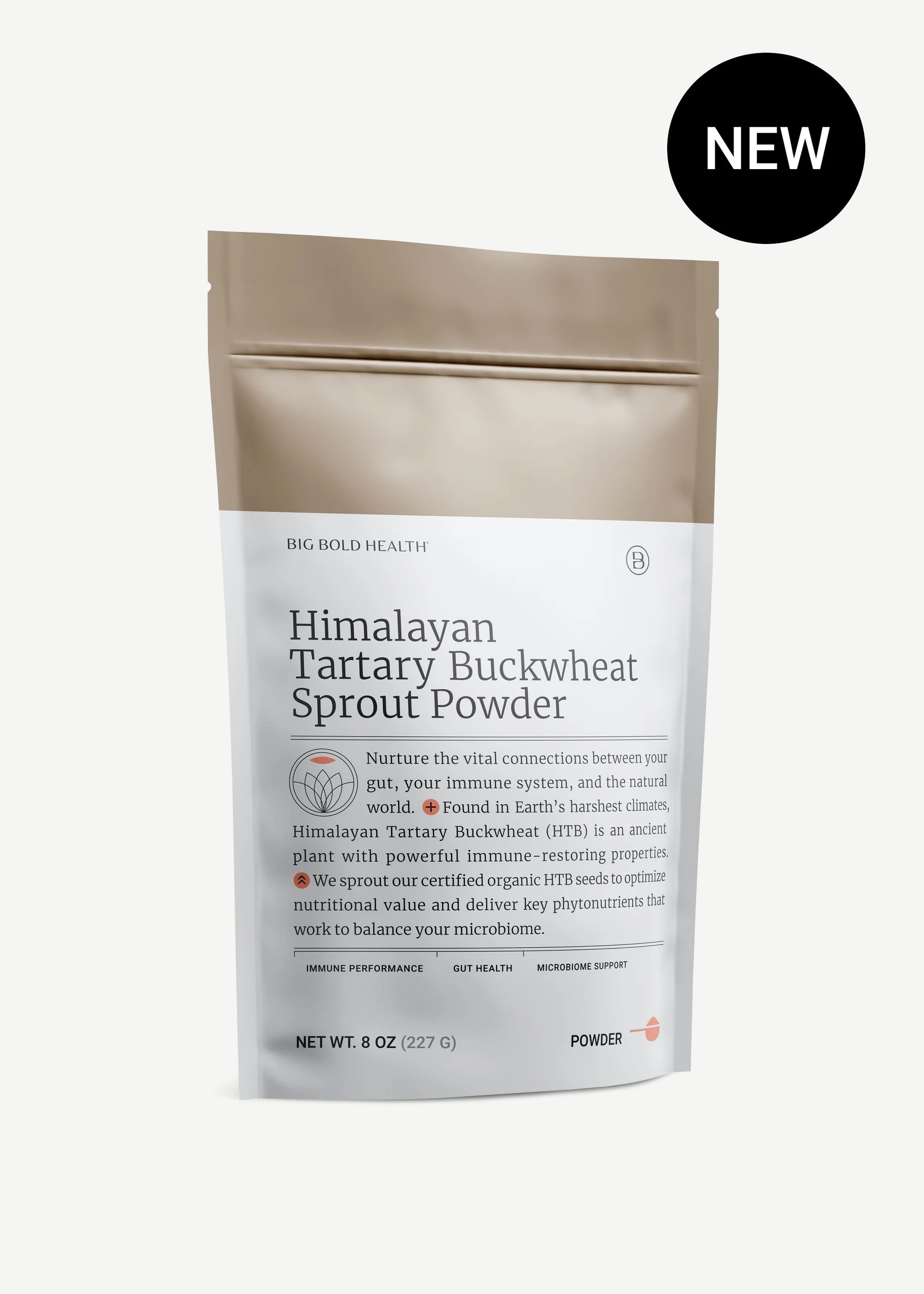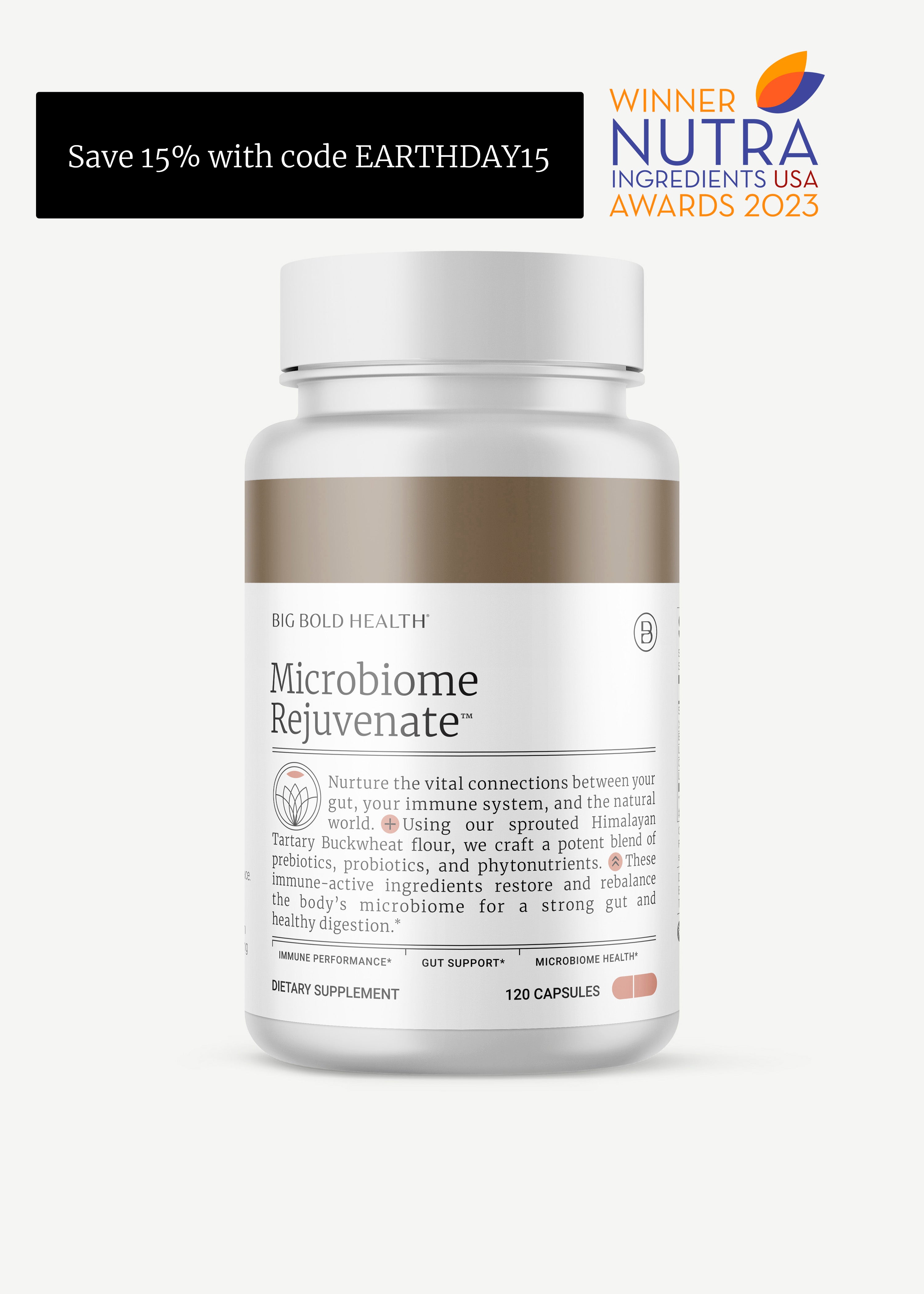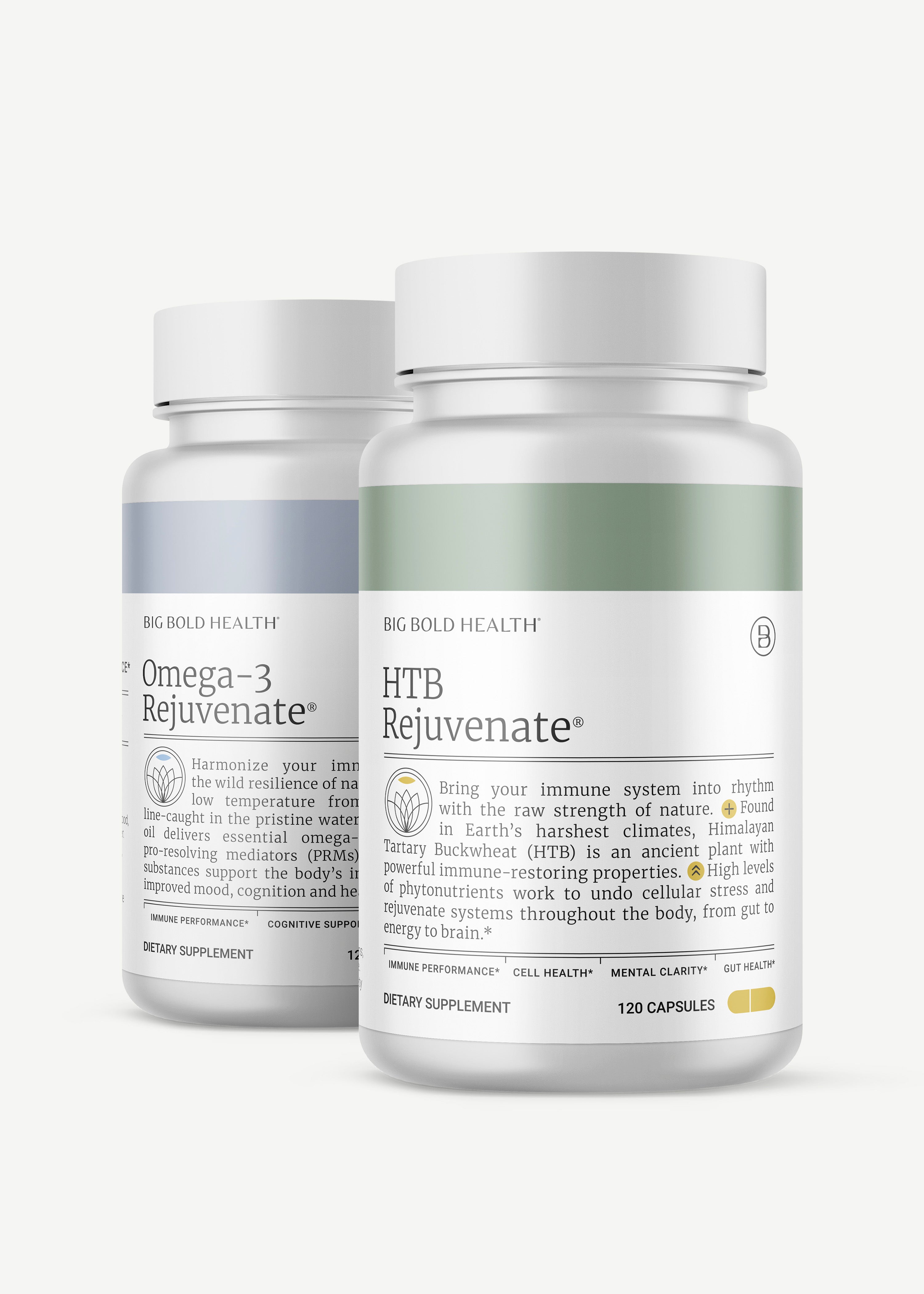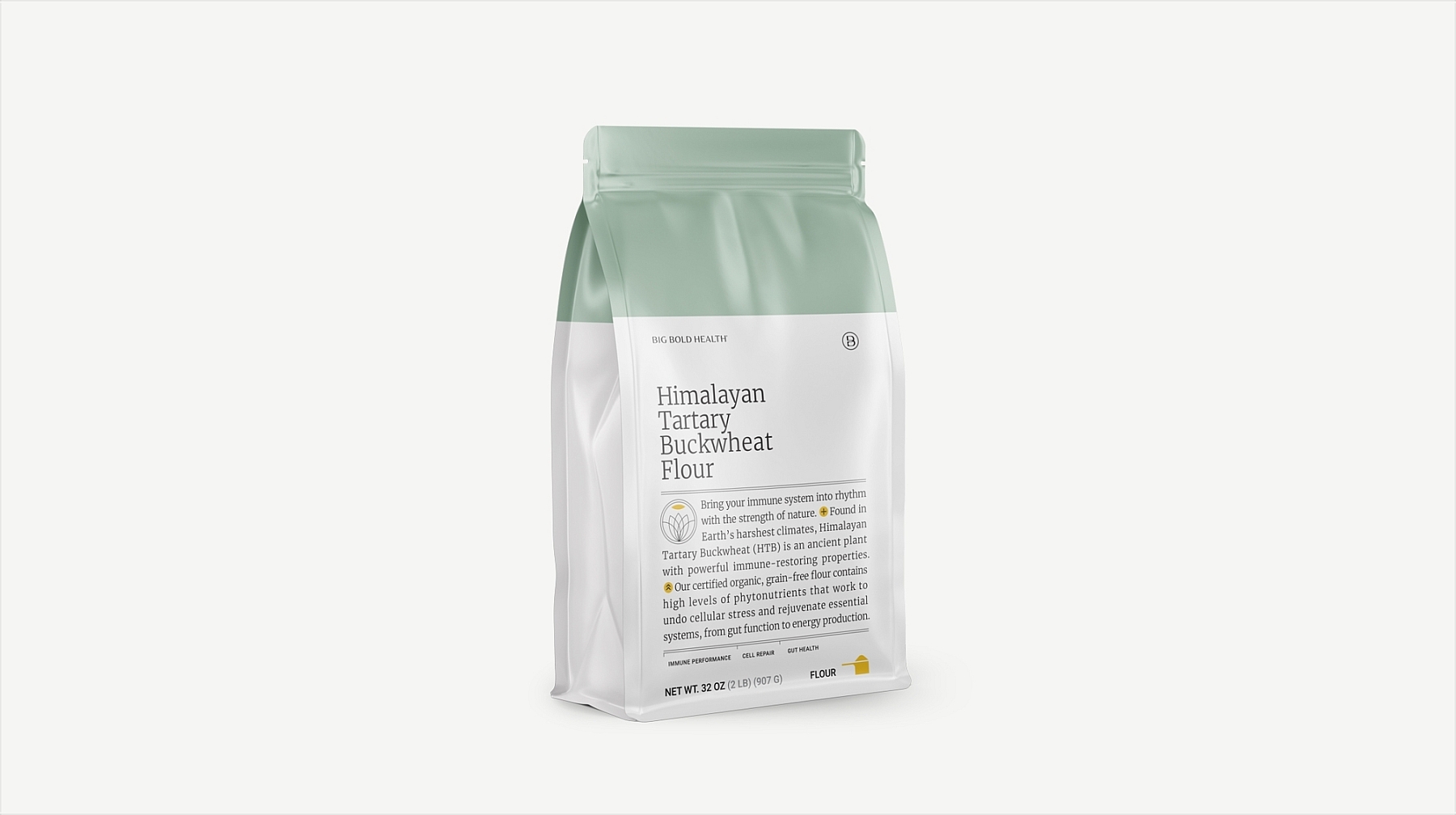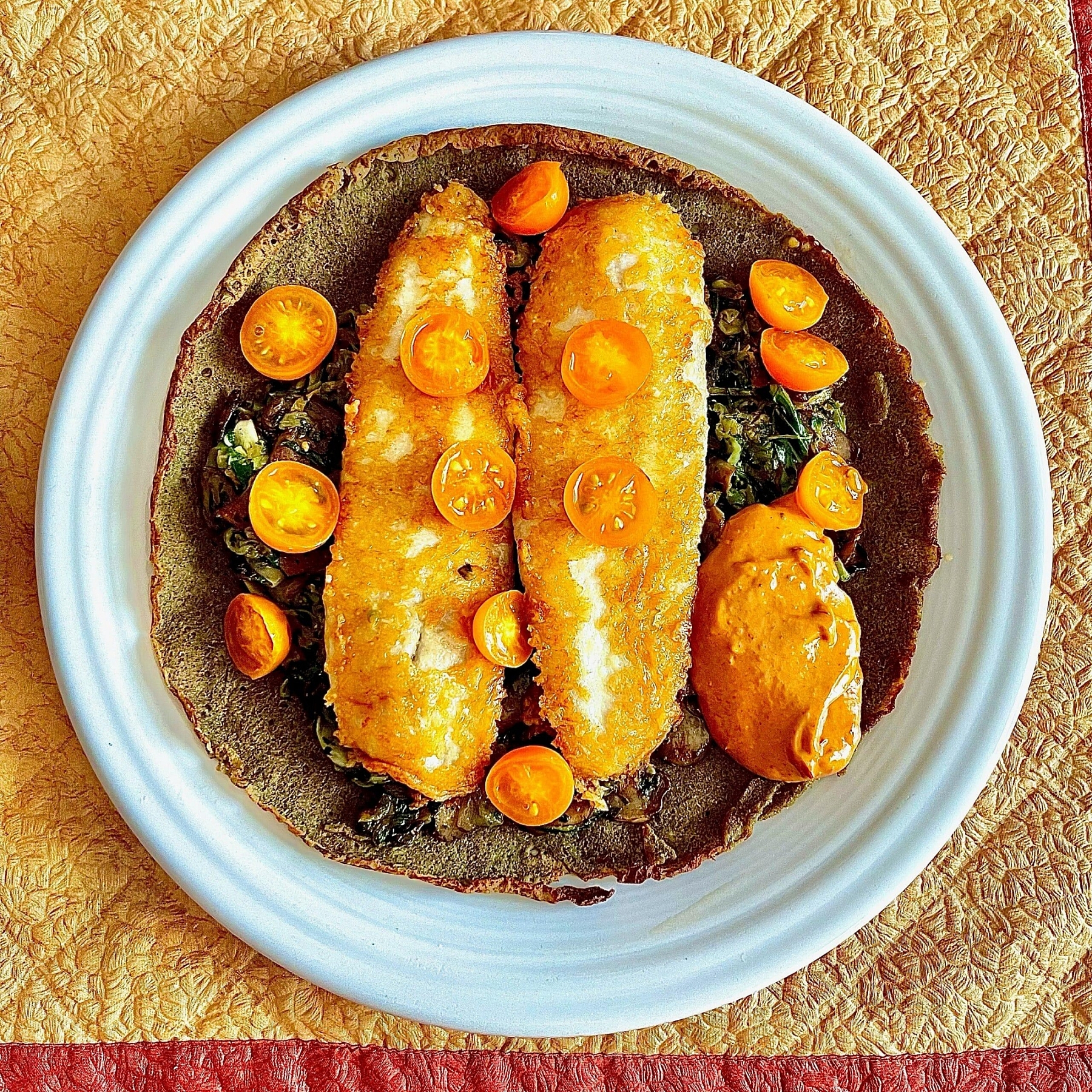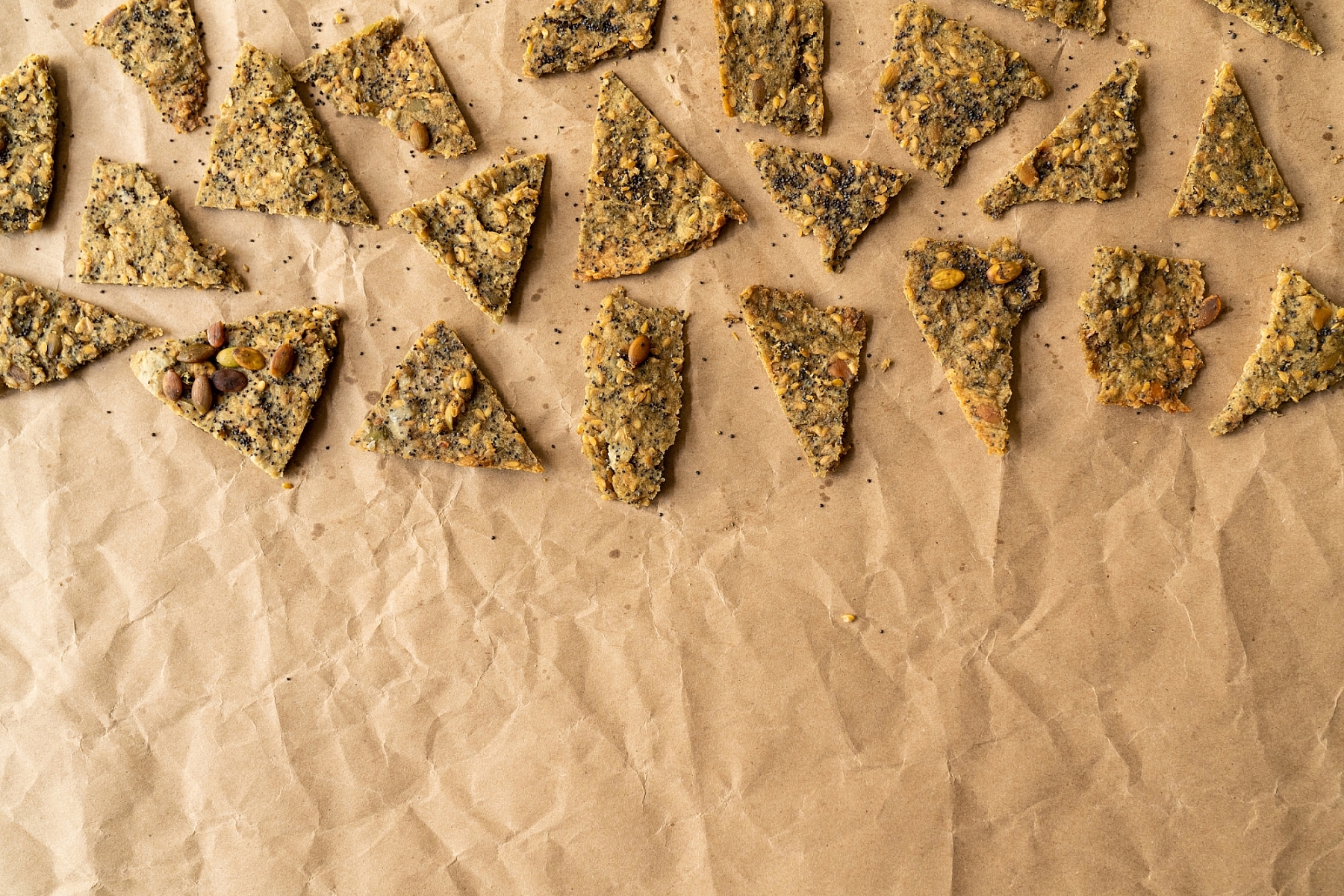Himalayan Tartary Buckwheat: Tips for successful, delicious recipes

When we first released our Himalayan Tartary Buckwheat Flour — HTB Flour, as we lovingly refer to it — it was a big hit and remains so to this day. To support the brave creativity of our customers, and mitigate food waste from lack of experience, we’d like to offer some tips and tricks we’ve learned along the way when working with our flagship flour.
The basics
This section serves as a primer for working with HTB Flour. Feel empowered to use it in a new recipe on your own, or just keep these in mind when working with one of our recipes on our Stories page.
- HTB Flour has a strong flavor profile that could be considered bitter, especially for those “super-tasters” out there. That’s the high level of desirable polyphenols you're tasting.
- A blend of about 30%-50% ratio of oat, coconut, almond, gluten-free flour, or your favorite alternative flour. You can also use common buckwheat flour, but it carries its own strong flavor that may enhance the bitter flavor of the HTB Flour. Blending with another flour is key in using HTB Super Nutrition Flour. It helps to cut the bitterness and build a better body for baked goods specifically.
- Increasing fat in a recipe – even adding just a teaspoon – can help temper the bitterness.
- Acidic ingredients can also help reduce the bitter-forward flavor profile.
- For sweet recipes: Using monkfruit alone, or as a blend with cane or coconut sugar, can help, as it seems to stand up to the bitterness better than cane sugar alone.
- Feeling bold and brave? Try increasing the ratio of HTB Flour in a recipe over time, especially with commonly made recipes like pancakes, muffins, and cookies.
- An important note on leavening agents. We’ve noticed that using 1.5-2 times more baking powder or baking soda in a recipe can make a cake or bread sponge lighter and less dense. If you increase the level of baking soda in a recipe, you may find reducing or omitting the salt is a good idea since baking soda can make foods taste salty.
Baked goods
- HTB Flour is “thirsty” – it readily absorbs water – which can lead to dry, dense, unappealing end-products. To combat this, adding more moisture and/or fats can improve your recipe. In tinkering with the flour, we generally try to add increments of ¼ cup at a time, either water or milk. For the fats, adding a teaspoon more can improve a recipe drastically. Use caution here. When adding moisture, don’t forget that the amount of leavening agent may need to be bumped up to help add lift to the sponge or dough.
- If you’ve had a recipe turn out dry or crumbly, or just something overly bitter, there’s still hope. Save the failed recipe and crumble by hand, or buzz in a blender. You can then:
- Add to smoothies
- Use as a topper for oatmeal, overnight oats, or yogurt parfait
- Add to a fruit crumble or streusel topping mix
- Use at about 50% rate for a pie “graham cracker” crust, mixing with coconut oil or butter until a very loose dough forms in your hand when squeezed together
Smoothies, overnight oats, salad toppers
Our flour is a raw product. Like any raw flour, it should be cooked prior to consumption. Here’s the instructions on toasting prior to using in uncooked dishes:
- Preheat oven (or toaster over) to 170°F
- Sprinkle ¼ - ½ cup of HTB Flour in an even layer on a parchment-lined cookie sheet
- Bake for about 5-10 minutes
You can put the cooked flour into a jar or other air-tight container to use as you please. Be creative, the possibilities are endless, and it’s a great way to add a nutrient boost to any dish.
Other uses
You can add HTB Flour to soups, stews, chilis, sauces, pie fillings, rouxs, and gravies as a thickener. Add about a teaspoon at a time, stirring until just before your desired thickness (it thickens more as it cools). Creating a slurry with HTB Flour and a small amount of water can help reduce lumpiness, if that’s a concern.
Storage
We recommend keeping your HTB Flour in an airtight container in a pantry or fridge.
Explore flavors
If you’re feeling adventurous and want to fully dive into creating your own recipes here’s a list of spices and flavors that pair well:

That's it. You made it! If you’re still reading, know that this is the most comprehensive Himalayan Tartary Buckwheat cooking guide we have so far. As time goes on, we will add more to this resource and keep adding delicious new recipes to our website.
